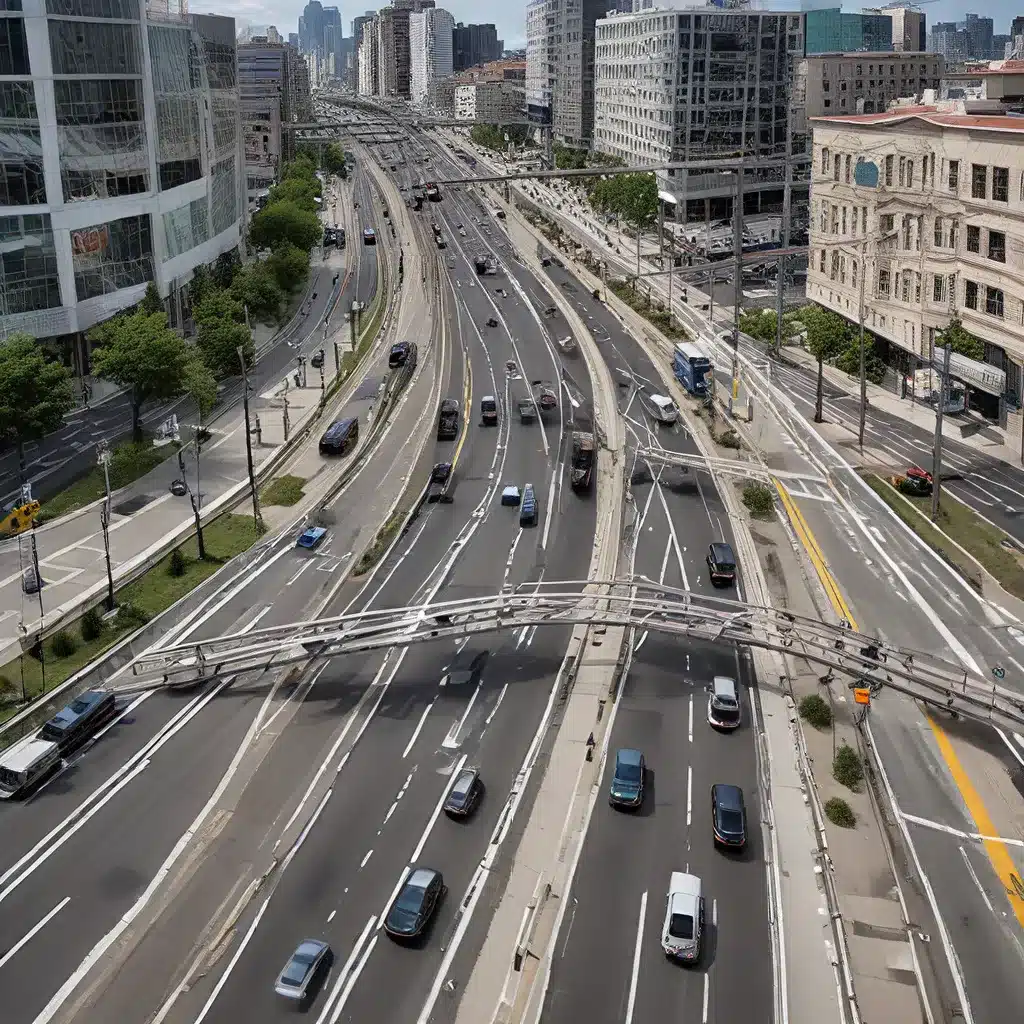
Navigating the Complexities of Sensor Networks in Critical Infrastructure
The world of sensor networks has evolved rapidly, with wireless sensor networks (WSNs) playing a crucial role in transforming critical transportation infrastructure. These distributed sensor systems are responsible for gathering and processing real-time data, enabling intelligent transportation systems (ITS) to optimize efficiency, enhance safety, and improve the overall user experience.
As the demands on transportation infrastructure continue to grow, the need for resilient and adaptable sensor network designs has become increasingly essential. Distributed algorithms have emerged as a powerful approach to address the challenges inherent in maintaining reliable, secure, and energy-efficient sensor networks in complex transportation environments.
Designing Resilient Sensor Networks for Transportation
At the heart of resilient sensor network design for transportation infrastructure are distributed algorithms that can effectively manage resources, adapt to dynamic conditions, and ensure uninterrupted data flow. These algorithms are designed to address key considerations, such as:
1. Real-time Data Management: Sensor networks in transportation must be able to handle the continuous stream of data from a variety of sources, including vehicle-mounted sensors, roadside units, and environmental monitoring devices. Distributed algorithms can enable efficient data processing and real-time decision-making to optimize traffic flow, incident detection, and emergency response.
2. Network Scheduling and Optimization: The complex, often multi-cluster nature of transportation sensor networks requires advanced scheduling techniques to optimize control performance and handle unexpected disturbances. Distributed algorithms can facilitate dynamic resource allocation, load balancing, and adaptive reconfiguration to ensure optimal network performance.
3. Fault Tolerance and Self-Healing: Transportation infrastructure is vulnerable to a wide range of system disruptions, from equipment failures to environmental conditions. Distributed algorithms can enable self-monitoring, fault detection, and self-healing capabilities, allowing sensor networks to rapidly recover from unexpected events and maintain critical functionality.
4. Energy Management: Sensor nodes deployed in transportation infrastructure often operate on limited battery power, making energy efficiency a paramount concern. Distributed algorithms can optimize energy consumption through techniques like dynamic duty-cycling, power-aware scheduling, and energy harvesting strategies.
Distributed Algorithms in Action: Key Capabilities
To address these challenges, researchers and engineers have developed a range of distributed algorithms specifically tailored for resilient wireless sensor networks in transportation infrastructure. Some of the key capabilities of these algorithms include:
-
Adaptive Data Management: Distributed algorithms can dynamically adjust data sampling rates, compression techniques, and in-network processing to maintain real-time data flow and minimize bandwidth consumption in the face of changing network conditions.
-
Decentralized Scheduling and Optimization: These algorithms can coordinate resource allocation and task scheduling across multiple sensor clusters, taking into account factors like sensor capabilities, network topology, and application priorities.
-
Fault Detection and Recovery: Distributed algorithms can monitor sensor health, detect anomalies, and initiate corrective actions, such as task redistribution, redundancy activation, or hardware reconfiguration, to ensure continuous operation.
-
Energy-Efficient Protocols: Distributed algorithms can implement duty-cycling schemes, power-aware clustering, and energy harvesting techniques to extend the lifetime of sensor nodes and the overall network.
-
Secure Communication: Distributed algorithms can authenticate sensors, verify data integrity, and enable secure data routing to protect against cyber threats and unauthorized access in transportation systems.
Transforming Transportation Infrastructure with Resilient Sensor Networks
The integration of distributed algorithms into wireless sensor networks has the potential to revolutionize the way we approach critical transportation infrastructure. By leveraging the adaptive, self-organizing, and energy-efficient capabilities of these algorithms, transportation agencies and infrastructure owners can:
-
Enhance Traffic Optimization: Distributed sensor networks can provide real-time traffic monitoring, incident detection, and dynamic routing to reduce congestion and improve travel times for commuters and freight.
-
Improve Safety and Emergency Response: Sensor networks with distributed algorithms can detect hazardous conditions, alert authorities, and coordinate emergency response efforts, leading to enhanced public safety and faster incident resolution.
-
Reduce Maintenance Costs: Distributed algorithms that enable self-monitoring and self-healing capabilities can minimize the need for manual interventions, reduce maintenance expenses, and extend the lifespan of transportation infrastructure assets.
-
Foster Sustainability: By optimizing energy usage and enabling renewable energy integration, distributed sensor networks can contribute to the sustainability of transportation systems, reducing their environmental impact and carbon footprint.
The Future of Resilient Sensor Networks in Transportation
As the demand for smart, connected, and adaptive transportation infrastructure continues to grow, the role of distributed algorithms in wireless sensor networks will become increasingly crucial. Researchers and industry leaders are actively exploring new frontiers, such as integrating machine learning into distributed algorithms, enhancing edge computing capabilities, and developing secure, multi-modal communication protocols.
By embracing the power of distributed algorithms, transportation agencies and infrastructure owners can build resilient, responsive, and future-proof sensor networks that can adapt to the evolving needs of our transportation systems. As we continue to navigate the complexities of critical infrastructure, the advancements in distributed algorithms for wireless sensor networks will be instrumental in shaping a safer, more efficient, and sustainable transportation future.